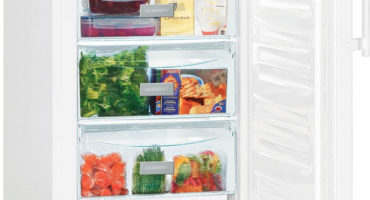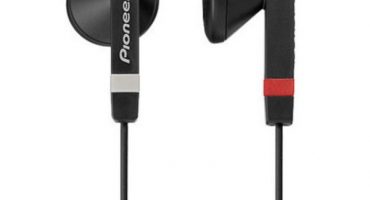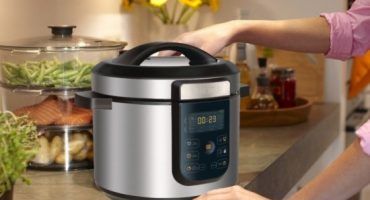Never using an iron can provide such a high-quality result when smoothing folds, creases and folds on clothes, which can be obtained using a steamer. In addition, with its help you can successfully cope with other important household tasks, such as disinfection or cleaning of soft surfaces of furniture, carpets and much more. At the same time, it is important to understand how to choose the right steamer for clothes and home, what technical parameters to pay more attention to, and how to use it for its intended purpose.
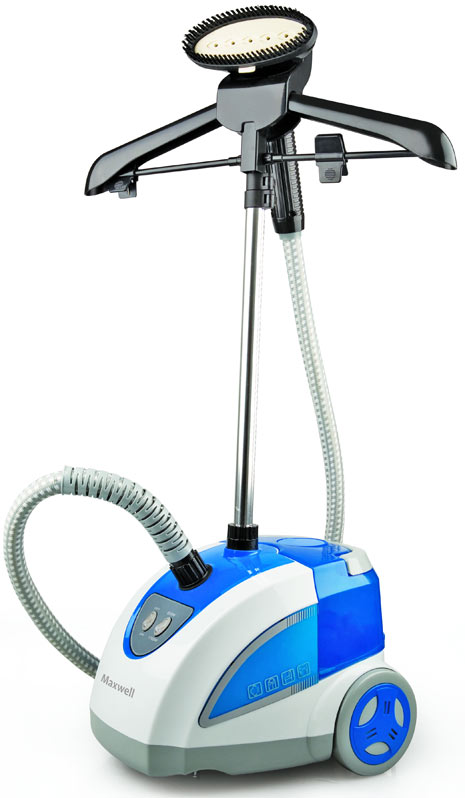
What is and why does he need a garment steamer
A steamer is a device designed to smooth fabric products using a stream of hot air. The main purpose of this household appliance is to steam up clothes, textiles and other items having a fabric surface to ensure smoothing of folds and creases on it. In addition, the elevated temperature of the steam ensures the disinfection of things, as well as cleaning them from stubborn stains and dirt, eliminating unpleasant odors and eliminating mold and dust mites.
A classic option for a home steamer is a device that has a steam iron in its design, a telescopic stand with a clothes hanger and a hose for supplying moist air from a steam generator located in a separate plastic case. The steam generator consists of a water tank and a pump for pumping it, a heating element and a control panel located on the housing. To ensure the relationship between the iron and the steam generator, a special hose is used. The iron on its working surface has holes, most often in an amount of at least 6 pieces. In order to prevent condensation from forming on it, a heating element can be integrated inside the iron. This type of steamer is called vertical or floor.
There are also simpler and easier to use handheld steamers. In terms of design, they are similar to floor variants with a significant difference in that all the main elements of its design are combined in a single building, and no hangers are provided for hanging clothes. Such devices are more compact and convenient to use, but at the same time they have the disadvantage of a small capacity and a small volume of the water tank.
Before choosing a garment steamer to perform certain specific actions, it is necessary to understand their differences from each other. The main such differences include:
- power, which is directly related to the performance of the device. The larger it is, the stronger the steam flow can be produced by the steamer, and, therefore, smooth out folds and kinks on denser fabrics. The optimal power value for household appliances is 1800 watts. In this case, if the power is less than 1500 watts, then you do not need to rely on the fact that such a steamer can iron the coat. These types of devices are more suitable for processing everyday clothes made of non-thick matter;
- water tank capacity.This indicator needs to be selected based on the needs for use and the availability of the necessary space for storing the device. The larger the water tank contains, the larger the body of the steam generator is, but the filling frequency is reduced and vice versa. Manual steamers in most cases have a very small water tank, the amount of which is enough for no more than 15 minutes of working with it;
- the presence of a power regulator, which allows you to reduce or increase the intensity of the steam supply depending on the type of surface being treated. This function is very convenient in everyday life, since the use of the device will be possible both for thick curtain fabrics, and for dresses and blouses made of thin and delicate fabrics.

How to use a garment steamer
In order to achieve a good result when using the steamer, it is necessary to adhere to certain rules, namely:
- direct use should be started only after the device is completely heated, which occurs 1-2 minutes after connecting the device to the mains;
- The steamer must be pointed exactly at the woven surface. In the on state, even if there is no steam supply, the sole of the iron cannot be directed at a person, as this can lead to burns;
- the movement of the iron should be performed from top to bottom;
- the passage of a steam jet in one place can be repeated if the surface was not completely smoothed out the first time.
In addition, there are rules, adhering to which it will be much easier to smooth out certain specific things, namely:
- shirts, jackets and dresses when processing it is best to pull a little down. A special board must be placed under the collar, in the sleeve or pocket, so that the shape of these elements is not lost during the steam treatment. If this is not possible, then in the process of ironing, hold parts of the clothing with your hand, on which a special heat-resistant mitt is wearing;
- classic trousers with arrows must be hung down with a belt, and iron the arrows themselves using a special clip on the ironing;
- the processing of outer clothing must be carried out with the appropriate nozzles that come with the steamer, which, in addition to smoothing, will ensure the removal of extraneous elements such as hair, down and feathers;
- if the design of the iron does not provide a heating element and the steam that is dispensed is sufficiently moist, then you cannot stop the iron in one place for a long time. This will lead to the formation of a wet spot, and subsequently a stain on the tissue;
- wardrobe items made of thin fabric, such as organza or silk, need to be ironed with reduced power, while increasing the distance from the surface of the iron to the fabric. In order to foresee how this or that fabric will behave when exposed to steam, it is necessary to iron the element that is visually hidden.
What water to use for pouring into a garment steamer

On the shelves of shops you can see models designed either only for use as a liquid in distilled water, or water of any quality, including from a tap. The first option most often has a lower cost, since its design does not provide for special protection against scale, namely filters. If untreated water is continuously poured into such a steamer, then as a result of the formation of scale, it will soon fail.
Models of steamers with anti-scale protection are more expensive. At the same time, they allow pouring untreated tap water into themselves. This is more convenient, since if you need to use the device and in the absence of a special fluid, it can be used without fear.When using tap water in steamers with a filter, it is necessary to periodically clean it. Also in order to prevent abundant steaming scale pre-treated or boiled water can be used.
How to choose a steamer for clothes on the advice of professionals
In order to make the choice of a steamer for the home correctly, on the advice of professionals, you must first understand what exactly is needed: steamer, steam generator or a steam cleaner, how often they will use it, things from which fabrics they will process and whether there is a place in the house for its storage. If the steamer, in addition to ironing, is necessary for processing products made of fabric with the aim of disinfection and cleaning, then the power of the steamer should be at least 1800 watts. Weaker models will not cope with this task.
So if steaming clothes is necessary only occasionally, for example, to smooth out a holiday suit before the celebration or use it instead of a travel iron on vacation and a business trip, it is best to purchase a manual version of the steamer. It has compact dimensions and light weight, which makes it possible to pack it in a suitcase with things. Its power is enough to smooth out loose fabrics, and at the same time a small water tank will be enough. Also in this case, it is worth paying attention to the power source of such a device. The device can be powered by either a stationary electrical network or batteries. And if the need for use may arise in places where the power supply network is not available, then it is better to choose a battery steamer.
If the steamer is needed for home use very often, and they plan to process things from dense materials, as well as steam curtains and curtains, it is better not to find a vertical steamer in this case. In the absence of sufficient space for its storage, you can choose a model with a small tank, since there will be no difficulties with pouring water into it at home. You should also pay attention to the quality of water that can be poured into the tank. It is best to give preference to models for which there are no significant restrictions on the quality of water. In this case, the steamer will have a higher price, but it will pay off very quickly.
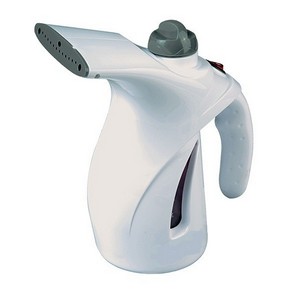
If we are talking about a vertical steamer, then it is necessary to provide for the presence of all additional devices in its kit. This will not only make it possible to use the device correctly, but will also greatly facilitate the implementation of this procedure. So, in addition to the main device, the standard set of the steamer should include:
- vertical rack with a hanger, which will achieve the correct state of things;
- a brush for cleaning things from hair, down and wool;
- protective heat-resistant mitt;
- clip for trousers, go brush clip, which allows you to iron the arrows on the fabric.
Rating of the best garment steamers in 2018
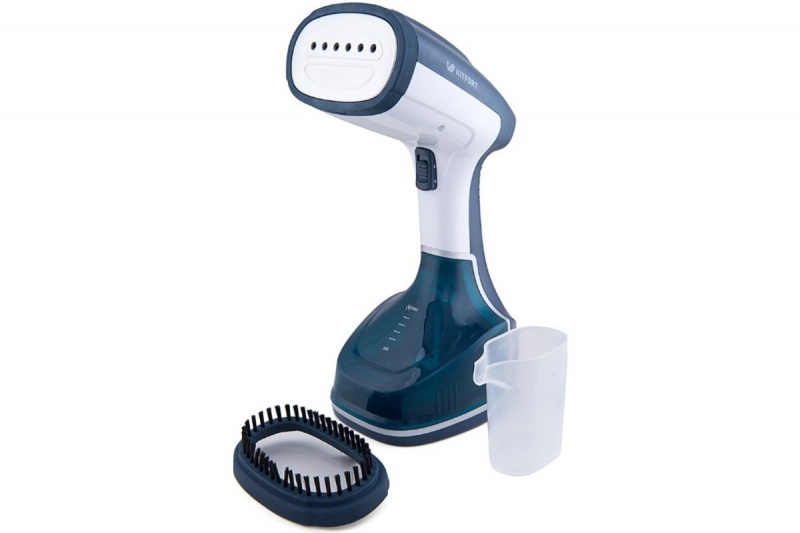
A huge number of models of steamers are presented on the consumer market, each of which has its own characteristics and advantages. The best of them included a rating of garment steamers, which includes:
- Grand Master GM-Q5 MULTI R is a multifunctional household appliance that combines the functions of such devices as a steamer, steam cleaner and steam generator. This is ensured by a sufficient power equal to 1950 W, a capacious container for water - 2.3 liters. and the availability of iron in the kit. Additional benefits include the anti-drip system and auto power off function. Of the shortcomings of this device, we can distinguish only the absence of a cord automatic winding device, the length of which in this model is 185cm;
- Philips GC660 / 05 is a vertical steamer with a capacity of 1800 W and a water tank capacity of 2.1 liters.It comes with all the necessary equipment, and in addition there is a special pad designed for cleaning pillows, carpets and fur products. Steam can be supplied in three modes, the choice of which depends on the type of surface to be treated. Additional advantages include the automatic winding function of the cord, a separate compartment for storing nozzles, silent operation and the ability to use any type of water. A clear drawback is the lack of an anti-droplet system;
- Kit fort KT-904 is a 2000W multifunctional device. To be used for various purposes, the device is equipped with a number of additional accessories, such as a scraper for washing windows and glasses and nozzles with a narrow nose for hard-to-reach spots. The disadvantages of this device can be called a significant weight equal to almost 5 kg, strong heating of the handle in the on state and requiring careful handling of the steam hose;
- Tefal IS8380E1 is a vertical steamer with a capacity of 1700 watts. The volume of the water tank is 1.7 liters. Its advantages include fast heating equal to 40 seconds, the presence of a nozzle for cleaning the fabric from hair and wool, and the presence of 5 modes of steam supply. Disadvantages - a short cord for connecting the device to the mains;
- Kitfort KT-901 is a 1500W vertical steamer. It combines the ideal ratio of price and quality for a device used in everyday life. The case and hoses are made of durable wear-resistant materials, which allows you to use the device as much as necessary. The kit has all the necessary nozzles and a handbag for their placement. The disadvantages include the absence of an anti-droplet system, as a result of which water stains may remain after application to the tissue. There is also the possibility of an unexpected shutdown due to the fact that the protection system is activated with a large accumulation of water drops on the iron.

